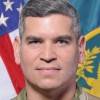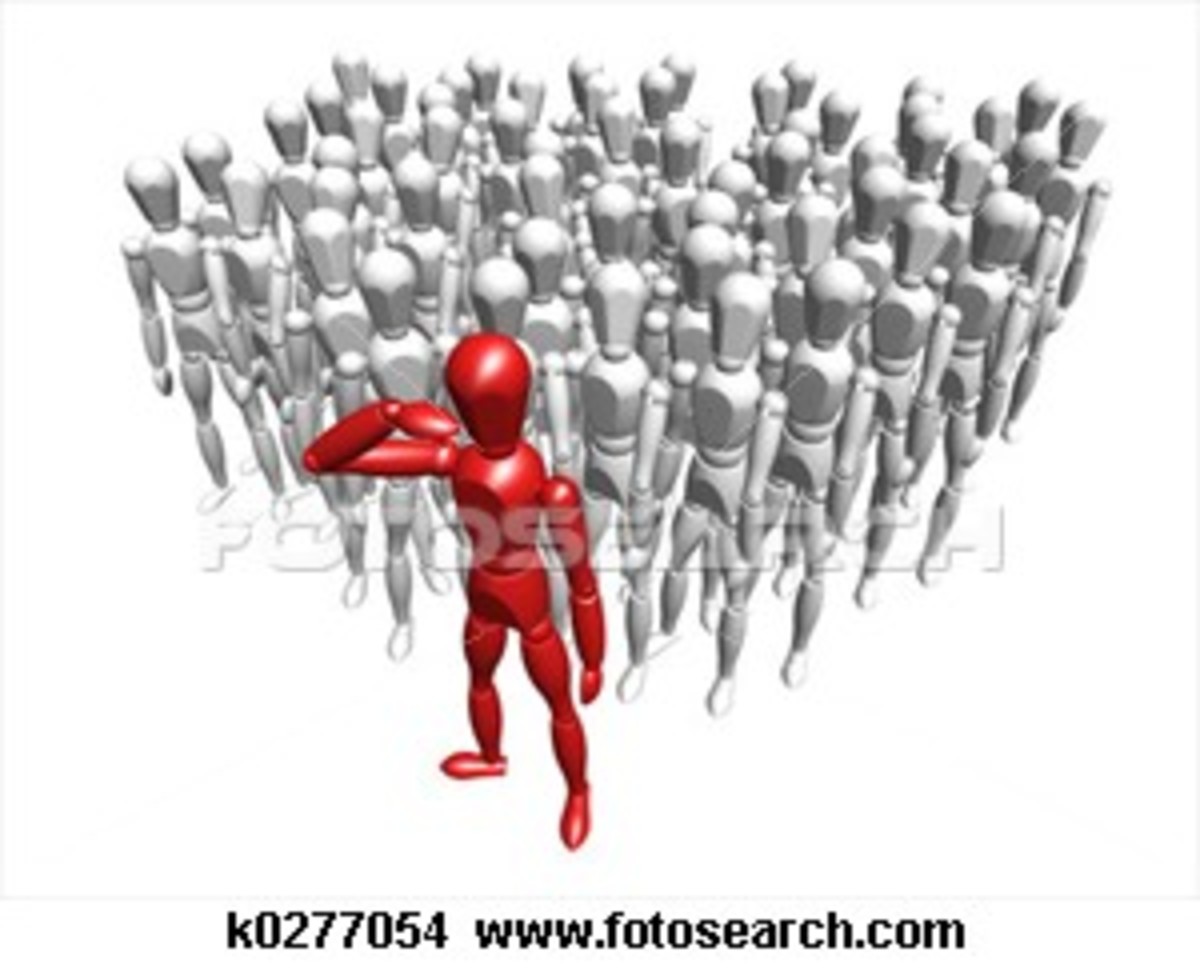Overmatch

General Martin Dempsey explains that leaders of the 21st century must approach the strategic environment and the challenges which unfold within it with intelligence, energy, and urgency.[1] The leaders in this century deal with problems of increased complexity amplified by the freedoms afforded by the information revolution and the impact of globalization across the world. The effect is more threats from more places and areas never expected before.
Leaders can create an overmatch capability by building four important aptitudes: strategic thinking, environmental scanning, creative thinking, and problem solving. This will not only make them essential to their organization and colleagues but will allow them to anticipate oncoming challenges that will necessitate effectual decision-making. Navigating turbulent waters is not easy and the aptitudes we build and possess make us capable leaders that will face uncertainty with quiet confidence and resolve.
How to think about a problem
“Wisdom is always an overmatch for strength.” - Phaedrus
To make consequential strategic level decisions, one has to clearly understand how to think at the strategic level. Strategic Leadership expert James Dubik explains that mastering strategic thinking is not simple [but highly important]; it’s a life-long endeavor [that takes effort and practice].[2] His work stresses a number of considerations to help one sharpen this aptitude. First, one has to understand that problems are no longer routine at the strategic level. They are now complex (difficult to wholly identify) and adaptive (adjust behaviors to counteractions). This means that perfect understanding of the individual portions of the problem do not automatically express a perfect understanding of how the entire system behaves on its own and/or with one’s input. The proper synthesis of information allows the leader and his team to properly define what the problem is and consider appropriate courses of actions.
Second, strategic leaders dealing with complex and adaptive problems need to come to the realization that they need to develop an open systems thinking style that opens the intellectual aperture necessary to forecast the possible outcomes of all possibilities.[3] Beyond the thinking portion, this aptitude helps leaders gain a full appreciation for the consequences of their decisions in the short and long term. Deft strategic thinkers also work to understand the external and internal environments that bring about complex and adaptive problems.
Learning about the Environmental
Strategic leaders need to intake and process concise, relevant, and timely information in order to assist them in making the best decisions possible for their organization. They are not allowed to live in what one scholar calls “the pleasure of deception.” One is deceived when overestimating how much knowledge one has over others and situations. The most effective strategic leaders are constantly conducting scans of the environment for better awareness and understanding.[4] They take nothing for granted; no knowledge is too inconsequential to learn from.
In a volatile, uncertain, complex, and ambiguous (VUCA) environment, it is important to conduct strong environmental scans. Scans will serve as an early warning to the leader so they can predict strategic inflection points, better anticipate forces of fragmentation, and therefore support the proper options to solve complex and adaptive problems.[5] It does not come as a surprise that failure to recognize external factors hinders a strategic leader’s decision-making capability. This is simply because everything will catch him/her by surprise. And guess what; one will not be leading or even advising leaders for very long under such conditions.
However, the ability to appreciate the environment and consider courses of action that are different than the norm can result in new opportunities. The opportunities can reward one handsomely. However, a good leader should know that with opportunities comes risks that have to be considered.
Successful environmental scans help strategic thinkers appreciate the ties that bind beyond the organization to find synergy. Leaders with a network perspective understand the dynamic web of connections that can have an impact on their organization. More importantly, such leaders can identify the relationships and people in the network that will foster strategic success — and those that will inhibit or [challenge] it.[6]
Leadership expert Michael Guillot skillfully explains that strategic leadership is the ability for one to exercise wisdom and vision to create clarity where it did not exist in the decision-making process and execute the plans.[7] By thinking strategically and conducting proper scans of the environment, leaders can make decisions that are interrelated and complimentary and thus making the environment one operates in more stable, certain, simple, and clear.
The Rise of Creative Leaders
“A great many people think they are thinking when they are merely rearranging their prejudices.” -William James
A critical skill for a leader is to understand and explain what the future could look like and what are the innovative new ways to solve the problems of the future. An accelerant to understanding the futures lies in creative leadership. Creative leaders capable of thinking about the future and igniting the engine of innovation provide themselves and their organizations with an overmatch capability competitors will have difficulty matching.
One of the skills that distinguish effective from ineffective leaders in the new millennium is the ability to successfully resolve complex challenges-the kind of problems brought on by rapidly changing environments that do not have easy answers.[8] Great leaders and great organizations need to be able to shape the future through creative thinking. Creative thinking becomes most relevant when it’s vital to generate options, novel and original, to 21st century problems.
As one transitions to senior levels, one needs to develop first, a self-awareness, then an aptitude to creative thinking. This will help to not only generate the required elements necessary to develop a creative environment, but it will also attract individuals who are creative thinkers. At the lower levels of leadership, leaders can be strongly action-oriented and reliant on their intuitive thinking to succeed. Conversely, at the higher strategic levels, the complexity of issues will not let one get away with just one’s intuition. The leaders at the higher level needs to attain a greater capacity to understand the inferences and assumptions that open the door of creativity.[9] It’s fair to say that this is not such an easy aptitude to develop.
A creative strategic leader becomes most valuable when the boundaries of an issue and the range of possible approaches need expansion. Creativity uniquely demands the mental agility and discipline to step back cognitively and see things in a new way.[10]
Problem Solving
In their book “The Chaos Imperative: How Chance and Disruption Increase Innovation Effectiveness and Success” Ori Brafman and Judah Pollack explain that leaders produce environments that allow the development of ideas to take hold.[11] The U.S. Army created such an environment to create a doctrinal concept that reflected a way to think, see, and create solutions for the problems it will face in the future.
The Army Training and Doctrine Command (TRADOC) published the Army Operating Concept (AOC): Win in a Complex World where General David Perkins, TRADOC’s commander, proposes a possible future of the operating environment and how the Army fits into such an environment. It uses creative thinking to outline innovative operational capabilities for future warfare.
Win in a Complex World outlines key doctrinal concepts that describe how the Army will employ forces and capabilities in complex environments against increasingly capable opponents. As well as the type of Soldier training and weapons systems acquisitions necessary to make this future possible. The AOC describes the Army's contribution to globally integrated operations and addresses the need for Army forces to provide foundational capabilities for the Joint Force to project power across all domains (land, sea, air, and space).
The AOC also guides force development through the identification of first order capabilities that the future force must possess to accomplish missions in support of national policy objectives.[12] The creative and futuristic concepts in the AOC serve as proof of how creative strategic leaders inspire novel concepts to create an overmatch capability.
The U.S. Army needed to respond to one basic instinct in all hyper-competitive environments, survive by solving the most difficult problems of tomorrow by thinking strategically and being innovative. It’s important for strategic leaders to master the creative process and be able to facilitate this process in others so problems, in the end, can be solved.
But don’t forget, taking bold leadership action at any level means accepting risks. Former Undersecretary of the US Army, Honorable Brad Carson stressed this as he stated that the “definition, to be innovative is to court failure, to be vulnerable, and we have to do that.”[13] In the end, it is imperative that leaders recognize their role and responsibility in the advancement of their organizations in the face of difficult challenges and strong competition.
Endnotes
[1] General Martin Dempsey 2015 leadership lecture series at NDU.
[2] James M. Dubik, “On Becoming a Strategic Leader.” Army (Jan 2013): 16-18.
[3] Ibid.
[4] Stephen Gerras, "Chapter 2: The Strategic Leadership Environment." Strategic Leadership Primer. Third ed. Carlisle Barracks, PA: United States Army War College, 2010.
[5] Ibid.
[6] Kristin Cullen et al., “Developing Network Perspective,” Center for Creative Leadership, March 2013, i.
[7] Michael W. Guillot,“Strategic Leadership: Defining the Challenge,” Air & Space Power Journal (Winter 2003): 67-75.
[8] Gerard J. Puccio et al., “Creative Leadership: Skills that Drive Change” (2011): Second edition, 28-38 and 56-66. Thousand Oaks CA: Sage Publications.
[9] Gerard J. Puccio et al., “Creative Leadership: Skills that Drive Change” (2011): Second edition, 28-38 and 56-66. Thousand Oaks CA: Sage Publications.
[10] Ibid.
[11] Brafman & Pollack. “The Chaos Imperative: How Chance and Disruption Increase Innovation, Effectiveness, and Success” (2013): 31-44.
[12] Army Capabilities Integration Center (ARCIC), http://www.arcic.army.mil/Concepts/operating.aspx (accessed 20 November, 2015).
[13] Former Undersecretary of the US Army, Honorable Brad Carson, Center for Strategic and International Studies (CSIS) interview remarks, 1 April 2015, http://csis.org/event/tomorrows-army (accessed November 19, 2015).
© 2019 Fernando Guadalupe Jr








